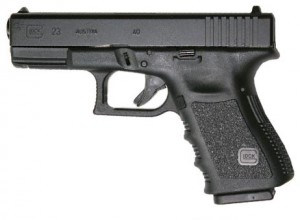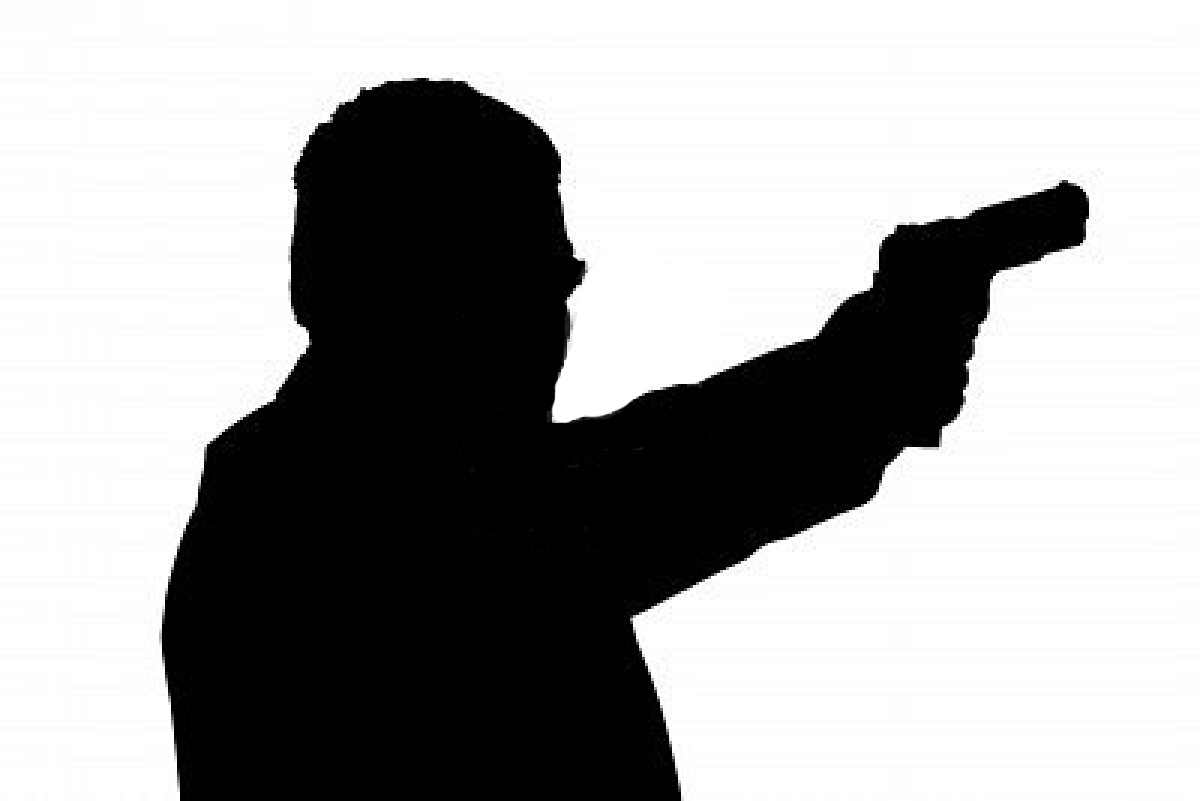After numerous outings to my shooting range NH, over the last few months, I’ve been giving more and more thought to what pistol I will choose for concealed carry when I get my Class A LTC. Now I’m getting ready to submit my application, and my co-workers – who I shoot with at MFL – and I have decided the time has come to make a decision.
What weapon I’m going to carry, to defend my life in an emergency, is not a decision I take lightly at all. Since the first time I laid my hands on one, the Glock 23 has been my favorite pistol to shoot and manipulate. Being such a heavy decision however, I’ve had second thoughts at times. A bad group here and a bad group there has been able to shake my confidence when only firing a 100 round set with the Glock. Most of my experiences with it have also been among 5 to 15 other pistols, making the Glock less than memorable. Alas, your selection for a concealed carry weapon probably shouldn’t be all that memorable, so much as comfortable; Much in the same way that your best lay was likely with the freaky girl that you’d never think of marrying.
In my experience, too many shooters take the CCW decision a little too lightly. Too many seem to stick with the first gun they feel comfortable shooting, without trying a dozen others to see if one might be even better. For many this can come down to growing up in a gun family. You shoot with what you’re family shoots with and by the time you’re old enough to try more variety, you’re too stubborn and stuck in your ways to be objective with new models. Thankfully I’ve had the luxury of shooting a lower number of bullets on a larger number of guns, rather than vice-versa. This has given me scope and a sample set larger than that of most adult shooters, from which to draw conclusions.
The way I went about my eventual choice was a scientific one, through and through. I started with parameters for the choice (though I didn’t all-together rule out the guns that didn’t meet them). The obvious place to start was concealability. Living in Massachusetts, open carrying my firearm will not be an option, so my choice needed to be compact enough to be invisible to the liberal ‘sheeple’ of the Commonwealth. On the other side of that statement, I also wanted to be sure the gun was large enough to accept a 10-round magazine – the maximum in MA. This put me in an automatic sweet spot, since my hands are thin (good for a compact model) but large (good for the longer grip length).
Next up was caliber. Since sophomore year of high school, I’ve regularly spent hours pouring over ballistics tables, articles, and recounts of real-world defense use of different calibers by law enforcement and civilian shooters, against two and four legged attackers. What I found was that, in terms of ballistic effectiveness (while maintaining manageable recoil), .40S&W and .45ACP were basically equal when looked at as a whole. .40 has the edge in magazine capacity, but I didn’t rule out .45. This left both as equal options.
So the pistol needs to be compact, without compromising magazine capacity, and must be chambered in .40S&W or .45ACP. Scientifically speaking, then, what else is there? Reliability was the last factor that needed consideration. This basically just meant ruling out any guns that are known for specific reliability issues. Glocks were favored here, as there are some astounding accounts of Glock reliability, but being someone who takes good care of my things, I would never carry a dirty gun so I’m not worried overly about fouling-based jams.
Those were the parameters I was searching within, but as with any good science, a sizable data set had to be amassed and then I had to second guess and retest my results. Each time I would go shooting, I would put 50+ rounds through any gun that was in serious contention (as well as many others) so as to get a better feel for them. Now that I’m down to crunch time, my mentor Tim – who I shoot with – and I went up to Manchester Firing Line with the intention of putting a few hundred rounds through the weapons we had respectively narrowed down to be the prevailing favorite.
Now, I’d love to tell you that there’s a surprise ending to this story, but it’s not to be. My first love turned out to be true love. After what has probably totaled 750 rounds through it and much second guessing, I have decided beyond a shadow of a doubt that the Glock 23 is the pistol I’ll trust my life to when I soon acquire the license to carry it.

Not in any hurry, I spent a lot of time shooting slowly, focusing on my fundamentals, and my ability to get the Glock on target quickly. When I really slowed down, I was drilling 3 inch groups at 30ft and was easily grouping a 10 round mag in the silhouette’s head at 60ft. Satisfied that I had the ability to send a bullet from the Glock to the spot that I intended, I started trying quick followup shots, hip-draws, and other defensive shooting techniques that would apply to the real world. All was going swimmingly until…. well… there was no until. It went just the way I wanted it to. I was quickly honing my preferred grip and trigger pull and my shot placement was improving. As the two hours on the range ran on, I spent more and more time on the little details – getting to know the Glock 23 more intimately. Tim, meanwhile, was consistently shooting through his 250 rounds on the H&K USP .45 (which he also settled on by the end of the day).
By the time I returned the Glock 23, I had done 20+ brass checks, had become rather good at clearing the chamber by racking the gun and catching the bullet, and had simulated at least 30 jams. I simulated both stovepipe-jams and failure to fire, racking the gun for a fresh round, and quickly placing a followup shot. I was getting pretty smooth with it and all the while I only experienced one real jam – a failure to return to battery on the last round of a mag, meaning I couldn’t try clearing and shooting.
I walked off the range feeling, frankly, ecstatic at the progress I had made with the gun and the degree of comfort I had achieved with it. Now it’s time to fill out my application and get my Class A LTC. It’s a good thing my town is known for issuing licenses for “All Lawful Purposes” because I would hate to have gone to all the trouble to not be able to carry.
Note: I later reevaluated this decision and selected the best self defense handgun—the Glock 19.


1 Comment